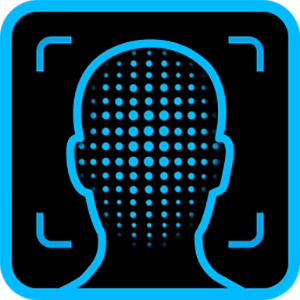FaceMe® Facial Recognition Solutions for Health & Safety Applications
The Covid-19 pandemic has redefined health and safety standards globally. As a result, businesses have had to adapt to new requirements: such as monitoring body temperature, symptoms, and mask-wearing, as well as providing contactless interactions.
Innovative companies like CyberLink have led the charge to address these challenges. A good example is CyberLink's FaceMe® technology, which is a complete solution for monitoring health and safety using facial recognition to accurately screen individuals before they enter a facility, even if their faces are masked. The convenience and effectiveness of facial recognition for monitoring health and safety has led to rapid adoption of the technology since the beginning of the Covid-19 pandemic.
In this article you will learn how to implement facial recognition technology for your health and safety protocols.
Facial recognition for health & safety
This cost-effective, non-intrusive screening technology automates the process of performing an effective health check. Kiosks or checkpoints equipped with cameras and facial recognition software automatically detect if someone is properly wearing a mask, covering the entire nose and mouth. The addition of a thermal camera enables precise body temperature, sending an alert if someone entering a facility shows signs of a fever. The system prevents congestion as the entire process takes less than a second.
When determining if a health and safety solution using facial recognition is right for your business, there are several factors to consider:
Factors for successful implementation
First, determine the purpose of the facial recognition system. Is it for the sole purpose of performing health checks, including mask detection and temperature screening, or will it also be used to control access for employees and visitors?
It may be sufficient to add checkpoints for mask-wearing and body temperature, while continuing to use existing access cards and visitor registration kiosks for access. However, good facial recognition solutions also validate identity in less than a second, relaying important information to different systems depending on the group with which someone is associated. For example, an employee’s attendance record would be automatically updated, or security would receive an alert if a block-listed person was identified. This technology replaces error-prone legacy systems with one contactless, instantaneous, and highly accurate face capture.
To illustrate, the health and security protocols of a financial establishment will vary greatly from those in the food service industry. In addition to checking mask wearing and body temperature, bank security will want to confirm the identity of anyone trying to enter restricted areas. For a restaurant however, proper health protocol to access kitchens will be far more important than verifying each person's identity.
Learn more about the top 7 success factors to consider when choosing the best facial recognition solution.
An example of facial recognition for health & safety
Let’s use a restaurant to illustrate the implementation of facial recognition for health and safety:
Pre-Screening Features
When employees enter the restaurant, a hybrid RGB/thermal camera detects whether masks are properly worn over the mouth and nose and measures body temperature, instantly flagging non-compliant employees.
Read our case study on how ACE Biotek adopted facial recognition for access control and health screenings.
Shift Monitoring
Facial recognition analyzes the video feed of cameras located throughout the restaurant to ensure everything is running smoothly and safely. Among the many checks performed is mask detection, ensuring employees keep their faces covered at all times. The system can also identify employees who are overdue for a break, avoiding the risks and dangers associated with fatigue. It can also send an alert if an employee is spending a dangerous amount of time in an area such as a walk-in freezer.
Access to Secure Areas
Facial recognition protects restricted areas, such as control and server rooms, management offices, and storage rooms, only allowing access for authorized individuals. Instead of keys or digital codes, which can easily be shared or stolen, the use of a reliable facial recognition solution like FaceMe, with an accuracy rate of up to 99.7%, provides secure, frictionless authentication and access control for these spaces.
Hardware and infrastructure requirements
Once you have determined the features you need, you must ensure you have the proper hardware and infrastructure to support them.
To will help you determine hardware and infrastructure needs, consider the following:
- Will this be developed for Windows or Linux servers?
- Will all content be processed by an on-site server, or will a workstation at each location process the content and then send results to the central server?
- Is there a need for mobile support, such as mobile checkpoints located at the periphery of a large complex? If so, will you need support for Android, iOS, or both?
Offered both as a flexible software development kit (SDK) or an out-of-the-box software solution, FaceMe® can be efficiently deployed across any IT infrastructure, including:
- Operating systems – FaceMe® supports all major operating systems, including Windows and Linux, and provides mobile support for Android and iOS
- Device types – mobile devices, personal or industrial PCs, workstations, and servers
- Camera types – webcams, IP cameras, thermal cameras; with 2D or 3D capabilities
- Chipsets – multiple options give integrators the freedom to optimize the solution based on important factors such as cost, power, energy consumption, form factor, and lifespan
After answering questions relative to the various aspects of the project, you have all you need to assemble the blueprint, evaluate the costs, and implement the solution.
Dive deeper into how to use facial recognition technology to build your solution.
The best facial recognition solutions for health & safety
Depending on your needs, we recommend two types of FaceMe solutions: FaceMe SDK or FaceMe Security.
FaceMe SDK
The FaceMe®SDK is a cross-platform facial recognition engine ideal for custom scenarios and unique user experiences. It gives you complete control to adapt the engine to your infrastructure. FaceMe® offers one of the highest accuracy rates, 99.7%, as independently established by the NIST Face Recognition Vendor Test (FRVT). FaceMe remains highly accurate when a mask is worn, with a rate that can reach 98.9%. It is optimized to run across hardware configurations, from high-end workstations to low-power chipsets typically used in IoT devices, and can run on Windows, Linux, Android, and iOS systems. You can read more about FaceMe® SDK’s system requirements.
FaceMe Security – An All-in-One Facial Recognition Solution
FaceMe® Security is turnkey software that can add facial recognition to almost any IP-based surveillance infrastructure, workstations and servers, VMS (video management systems), and IP cameras. FaceMe® Security can conduct a wide range of tasks from identity verification, visitor check-in, and employee time clock, to mask detection, real-time monitoring, and instant alerts.
You can customize FaceMe Security and expand its capabilities with several add-ons.
Health Add-on
The FaceMe® Health Add-on combines health monitoring with facial recognition, providing three crucial checks for preventing the spread of viruses like Covid-19:
- Mask detection: This function verifies that a mask is worn, correctly covering the nose and mouth.
- Identity verification: FaceMe provides up to 98.9% accuracy when verifying the identity of someone wearing a mask.
- Temperature detection: FaceMe measures body temperature with a connected thermal camera, sending an alert to appropriate personnel in cases of fever.
The Health Add-on greatly benefits facility managers and health and safety departments, while also reducing virus transmission and ensuring individuals remain healthy and able to perform their work activities.
Additional add-ons
- Check-in Add-on: Connect to employee attendance systems to clock in/out, and integrate facial recognition into door access systems.
- VMR Add-on: The VMR (video monitoring and recording) Add-on handles surveillance activities when no VMS is available. It provides live multi-camera monitoring for up to nine streams, real-time alerts, and video recording and playback.
Facial Recognition with FaceMe® in a Post-Pandemic Workplace
While vaccination rates continue to rise, it’s clear we are far from being past the pandemic. Masks must still be worn almost everywhere we go, and there is no end in sight to mutations and new variants. Investments in innovative technologies like facial recognition help everyone stay safe and healthy, not only for today but for the future as we navigate our new normal.
To learn more about FaceMe®, please visit the FaceMe official website or contact our sales team today!







